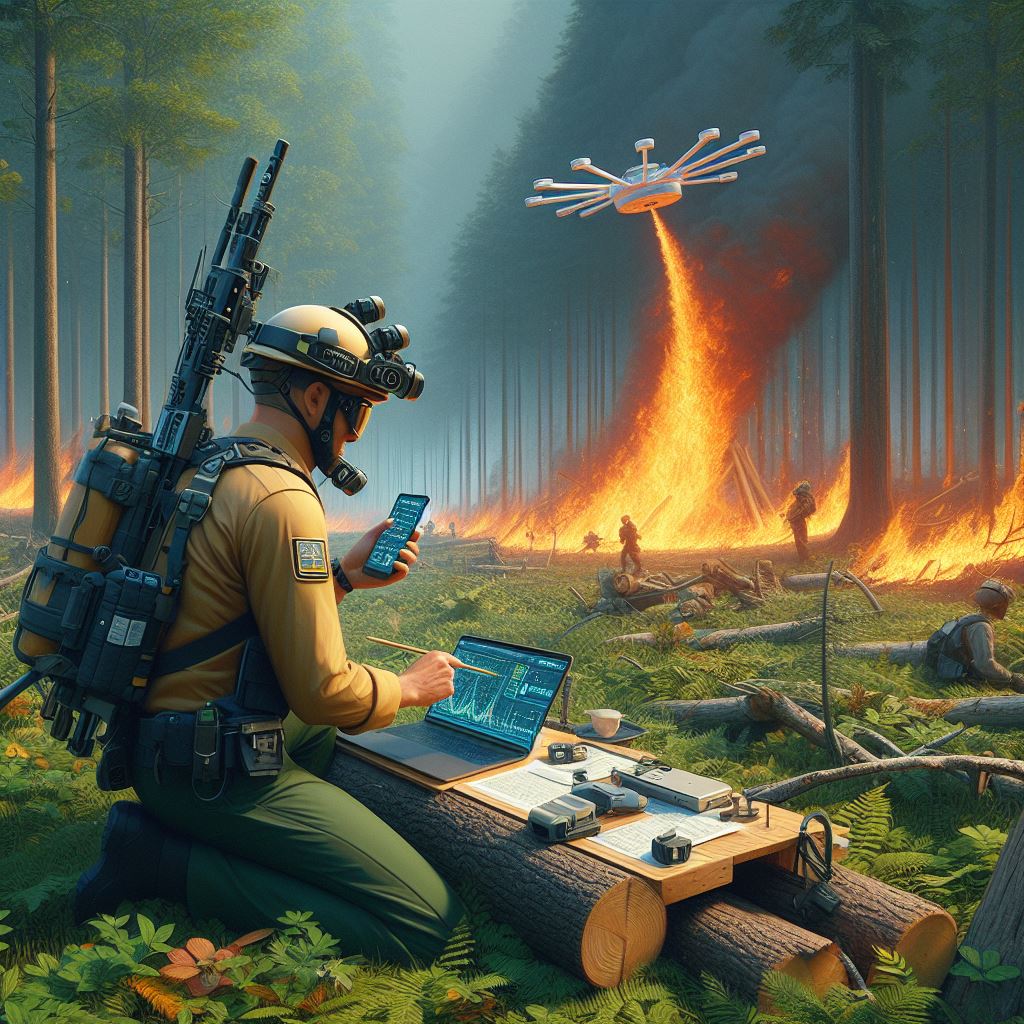How LoRaWAN Mesh Networks Are Changing The Game In Environmental And Forest Management

By Carsten Brinkschulte, CEO, Dryad Networks
In wireless communications, LoRaWAN networks are the standard in the unlicensed spectrum to connect devices over long distances with minimal power consumption. Those features make LoRaWAN networks perfect for the Internet of Things (IoT), especially for outdoor applications including smart metering and environmental monitoring.
The LoRa/LoRaWAN Standard
The well-established LoRa/LoRaWAN standard is a centerpiece in long-range communication for IoT applications. The LoRa ecosystem was developed and licensed by Semtech Corporation and launched in 2012. It now includes over 176 certified devices, such as chipsets, modules, sensors and gateways. The independent, non-profit LoRa Alliance certifies the devices and helps ensure a wide array of interoperable components for constructing multi-vendor solutions.
LoRa operates in the unlicensed spectrum in Europe (868Mhz), the U.S. and Australia (915MHz) and Asia (433MHz). Unlicensed spectrum enables private networks without spectrum licenses or regulatory fees, which lowers costs and simplifies deployment.
Why organizations choose LoRa
Organizations often select LoRa/LoRaWAN among available network standards and protocols because:
- LoRa is among the best-in-class in the LPWAN category and offers supreme advantages for low-energy, long-range wireless communication.
- LoRa operates in the unlicensed spectrum, which reduces OPEX compared to other LPWAN network technologies mostly owned by mobile operators relying on licensed spectrum associated with costly service fees.
- The LoRaWAN protocol supports FUOTA (firmware updates over the air), which is essential for ensuring the longevity and reliability of sensor networks and limiting maintenance costs.
- The mature LoRaWAN protocol and stable ecosystem perfectly support applications requiring operational longevity, such as forestry.
- The broad range of LoRaWAN-compatible network components and sensors facilitate the development of customized applications addressing a wide array of environmental and ecological use cases including biodiversity monitoring, forest health and even carbon credits verification.
LoRaWAN can become the generic network infrastructure of forests, like an “internet of trees” that can support forest management applications including the early detection of diseases, pests and the impacts of climate change. LoRaWAN networks could provide critical information for policy-making and conservation efforts in addition to enhancing the sustainability and resilience of forest ecosystems.
Important LoRaWAN terms include:
LoRa stands for “long range.” LoRa is a wireless technology with exceptional ability to transmit data over many miles using very little battery power. Semtech Corporation, a leading wireless chipset manufacturer, developed and promotes LoRa.
LoRaWAN stands for “long range wide area network.” LoRaWAN is built on top of LoRa and is the industry standard protocol for network servers, gateways and sensors to communicate with each other. LoRaWAN specifies a star-of-stars network topology, in which a central network server manages multiple gateways which in turn communicate with sensors in a single-hop network topology.
LoRaWAN Relay: A recent addition to the LoRaWAN standard, LoRaWAN relay allows LoRaWAN devices to communicate with gateways using a relay device that acts as a single-hop bridge between the end device and the gateway.
Mesh Network: A mesh network is a multi-hop “web” network enabling multiple devices to communicate and relay data with each other, as opposed to a traditional “star” network, such as LoRaWAN, in which devices are connected via single hop to gateways. Multi-hop mesh networks offer redundancy and extended range beyond single hop networks.
The advantages of LoRaWAN mesh networks
Although the LoRaWAN standard does not include mesh networking, adding mesh network capabilities to LoRaWAN offers considerable advantages:
- Extended range for large areas and remote locations such as forests, nature reserves and even disaster areas.
- Improved resilience, redundancy and reliability: If one node fails, other nodes can reroute data.
- Scalability: It’s easy to extend network coverage by adding more devices.
- Compatibility: Devices compatible with LoRaWAN from multiple vendors can participate in the extended range and coverage of the multi-hop mesh network
LoRaWAN mesh networks in action
The power of mesh technology lies in its applications. Here are a few examples of how LoRaWAN mesh networks can improve global wildfire mitigation:
Spain: Coverage of vast biodiverse forest areas
In Andalusia, Spain, a LoRaWAN mesh network covers vast biodiverse forest areas, providing early warnings to help protect the region from devastating fires.
Sicily: Improving firefighting response time and decision-making
The town of Castelbuono, Sicily bolstered its firefighting efforts with a LoRaWAN mesh network that monitors critical fire-risk areas in real time. This empowers local fire departments to react swiftly and make more informed decisions regarding potential threats.
California: Ultra-early detection
A pilot at the California Department of Forestry and Fire Protection (CAL FIRE) demonstrated a LoRaWAN mesh network’s ability to detect wildfires significantly faster and earlier than traditional methods. Ultra-early detection can reduce response times and the devastation and costs associated with uncontrolled wildfires.
Lebanon: Rapid intervention from ultra-early detection
In December 2023, a long-range LoRaWAN mesh network detected a small, unauthorized fire in a Lebanese forest. The alert reached authorities quickly, facilitated rapid intervention and mitigated the risk of a larger, uncontrolled wildfire.
Enhancing LoRaWAN with mesh technology significantly improves remote area connectivity, especially in vital sectors including conservation and forest management. The examples showcase just a few ways LoRaWAN mesh networks are transforming global wildfire management. Continuous innovation in developing and deploying LoRaWAN networks will enable advancements and wider applications benefiting environmental protection and forest monitoring for current and future generations.
Carsten Brinkschulte

Telecoms tech veteran and serial entrepreneur Carsten Brinkschulte is co-founder and CEO of impact tech startup Dryad Networks. The firm’s large-scale IoT network for the ultra-early detection of wildfires will help to save the world’s forests and fight climate change.
Carsten’s 20 years in mobile network infrastructure includes three successful exits: Core Network Dynamics (acquired by Twilio), Movirtu (acquired by Blackberry), and Synchronica (acquired by DAT Group).